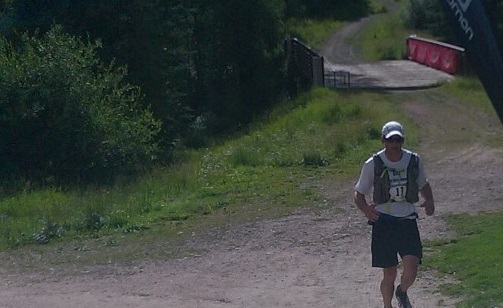Cadence Formula?
A Quick note before I get into today’s post: It was a super
exciting time for me last year when I decided to launch this blog. I had some
good content and a bit of time to create more. Then, I started what I thought
was just another post about my training experiences: When the Training run
becomes the longest run. Well, it’s become the longest post. Between that,
holidays and sort of ‘off-season’ of running, I got a bit bogged down. Anyhow,
I will try to create some regular additions as I embark on the next training
cycle. Today I’m going to write about Cadence.
Cadence
In a previous post I mention that I
never learned to run. Realizing that, and attempting to finish distance
runs I have a new interest in my own technique. I have wanted to get some video
as I know video analysis can be quite eye opening. In the meantime I am trying
to focus on the principles I call NOBLE running form, and Cadence.
Generally I am trying to move efficiently, knowing each
efficient stride saves energy for the next, creating an exponential effect over
a dozen miles. Trying to keep a forward lean, middle/front foot strikes and
being mindful of leg angles are the mechanical aspects. In addition monitoring
my bounce and arm swing help reduce stress on my body.
Since it is hard, if not impossible to focus on more than
one or two things at once, I use the NOBLE acronym while running to reign in my
‘lazy body’ as I call it. You know, that type of run you fall into when you’re
jamming out to your tunes or daydreaming about work. If I feel myself getting
too ‘loose’ I just say NOBLE in my head.
My primary focus during the upswing of my early season
training is increasing my overall cadence. It is said 180 is about the ideal
cadence. In order to increase mine, I listen to up tempo music, and/or keep a
tempo/ 8-count in my head. This comes from music also, sort of like counting
measures.
So, as I warm up and throughout my run I am not always able
to maintain this. I live in the mountains, and winter running can be
challenging (last week, mid-April gave us another foot of snow). So, my
cardiovascular system is not quite up to speed. When I sense myself lagging in
cadence, or consistently sloppy in form, I walk.
This is a bit of a challenge as I have been a ‘runner’ for
5-6 years now. However, by many measures I would NOT be considered a runner. I
am certainly no elite. I am learning though that even elite mountain runners
likely walk more than I had thought. The reality is: Even with stints of
walking, my miles are competitively fast to trying to ‘push’ a certain pace
through.
This is also likely better than trying to keep my heart rate
toward the high end of its range. The latest thinking shows that long stints of
moderate heart rate increase with short bursts of intensity (40-60 seconds) may
be the healthiest way to train. For me, this means on my regular, flat runs I
run with a higher (160+) cadence until I feel myself gasping for breath. Then I
walk until I regain my breath or I generally feel a bit recovered and repeat.
 |
| Me, at the start of a 50k... still getting dressed |
For ‘top end’ speed or VO2 type training I try to run
sprints/hills once or twice a week. I have not been consistent at this over my
off/early running seasons. I believe when I incorporate this again I will have
a notable increase in my ability to sustain cadence. I have read that an
average runner should expect 1-2 months of cardiovascular adjustment when
increasing cadence. I began to incorporate these concepts late last fall/winter
so I believe I am ‘getting there’ a bit faster.
In pondering all of this (as I typically think voraciously
on my runs), I asked myself if anyone has taken a biomechanical/bioengineering
look at optimal cadence. It seems that Jack Daniels observed 180 as an ideal
cadence and all subsequent observations have sought to confirm or deny this. I
ask why is this ideal (or 160-200
being the range)?
Cadence
Formula?
It seems to me averages ignore or erase outliers. We observe
that humans frequently have similar proportions, to the extent we create rules
of thumb (eyes are spaced an eye width apart, your foot is about as long as your
radius/ulna). So, can we examine these length ratios (legs to upper body etc),
in conjunction with stride angles and other aspects of form; in order to
determine an individual’s ideal cadence?
If we could create a cadence formula, it could then be optimized
for different terrain (generally flat, up, down, possibly with incline
thresholds). At the elite level this could have game changing implications for
speed and distance as runners are made more efficient and create purposeful
race strategies with specific tactics.


Comments
Post a Comment